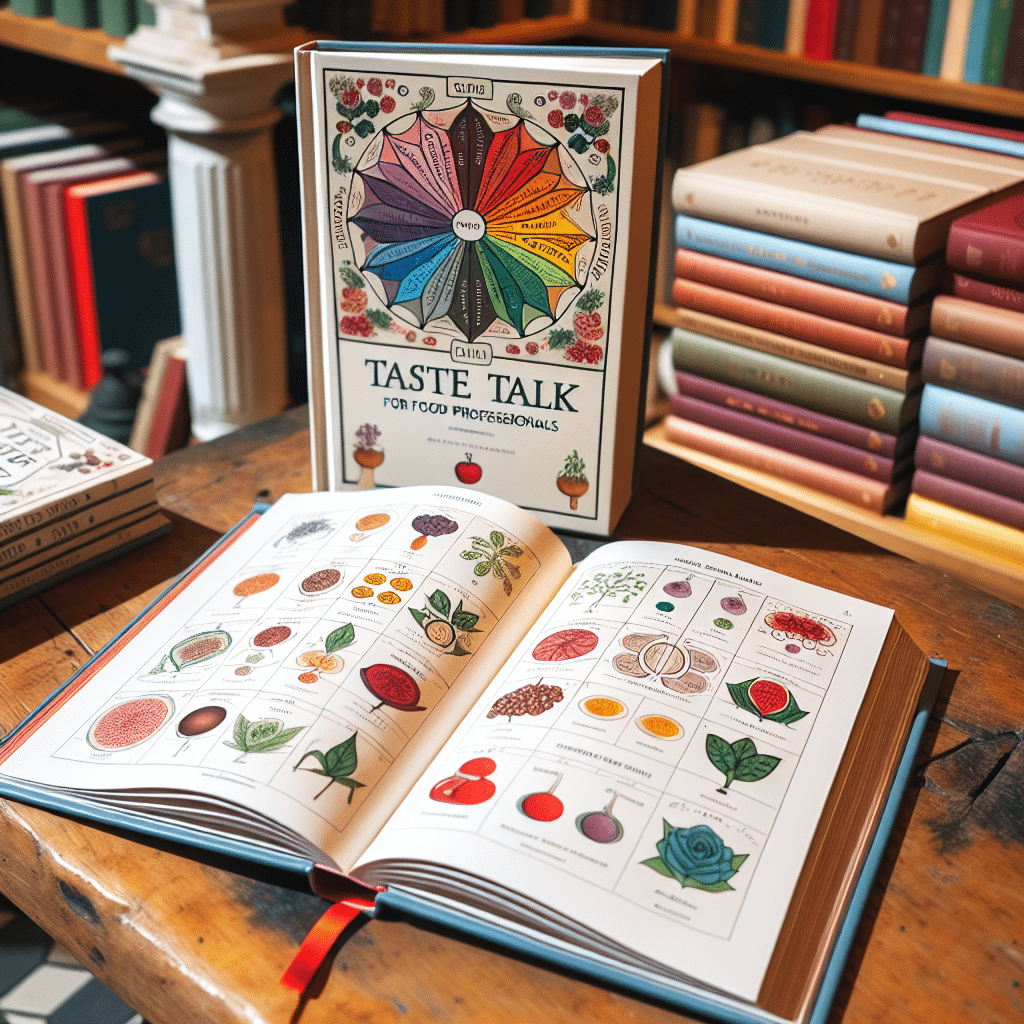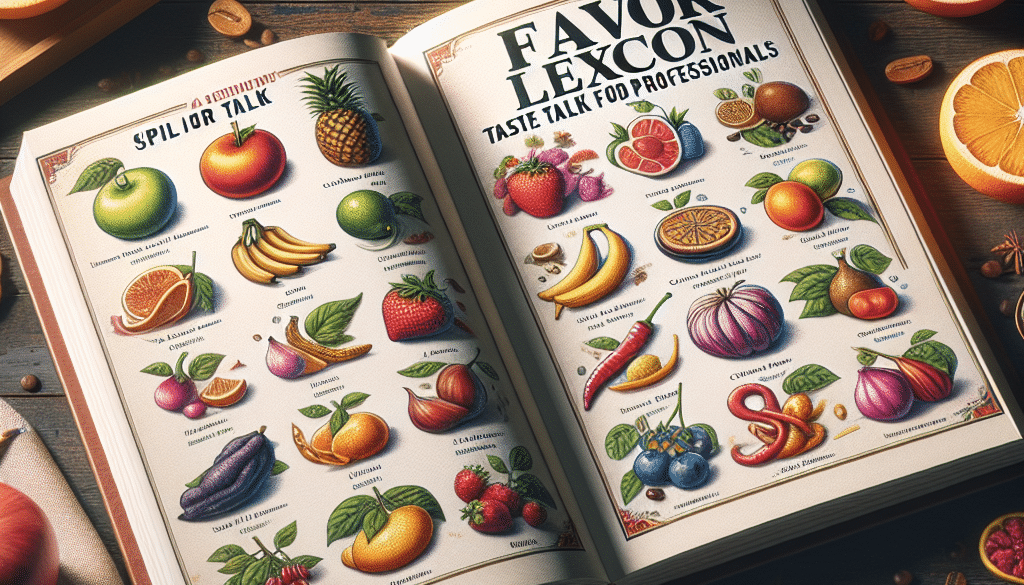Flavor Lexicon: Taste Talk for Food Professionals
-
Table of Contents
- Flavor Lexicon: Essential Vocabulary for Food Professionals
- Understanding the Basics of Flavor
- Building a Flavor Lexicon: Descriptive Language
- Case Studies: The Power of Precise Flavor Descriptions
- Expanding Your Flavor Vocabulary
- Statistics: The Impact of Flavor on Consumer Choices
- Conclusion: The Significance of a Flavor Lexicon
- Discover ETChem’s Protein Products
Flavor Lexicon: Essential Vocabulary for Food Professionals

The world of gastronomy is as rich in flavors as it is in the language used to describe them. For food professionals, a well-developed flavor lexicon is not just a tool of the trade; it’s an essential component of their craft. Understanding and articulating the nuances of flavor can elevate a culinary experience from the mundane to the sublime. This article delves into the intricacies of the flavor lexicon, offering insights and examples that will enrich the vocabulary of chefs, sommeliers, food critics, and anyone passionate about the art of food.
Understanding the Basics of Flavor
Before diving into the complexities of the flavor lexicon, it’s important to understand the basic elements that contribute to taste. Flavor is a multi-sensory experience that encompasses taste, aroma, and mouthfeel. The five basic tastes are sweetness, sourness, saltiness, bitterness, and umami. Each plays a critical role in how we perceive the overall flavor of a dish or beverage.
- Sweetness: Often derived from sugars, sweetness can add balance to dishes and is a key component in desserts.
- Sourness: Acidity can brighten a dish and provide contrast, commonly found in citrus fruits and fermented foods.
- Saltiness: Salt enhances other flavors and is essential for bringing out the best in savory dishes.
- Bitterness: Although often perceived negatively, bitterness can add depth and complexity, as seen in dark chocolate and certain greens.
- Umami: Known as the “fifth taste,” umami is savory and rich, associated with foods like mushrooms, tomatoes, and aged cheeses.
Building a Flavor Lexicon: Descriptive Language
Developing a robust flavor lexicon involves more than just identifying basic tastes. It requires a descriptive language that captures the essence of each sensory experience. Here are some key terms and their meanings:
- Aromatic: Refers to the fragrant, often volatile compounds that contribute to the smell of food and drink.
- Earthy: Describes flavors reminiscent of soil or vegetation, such as beets or mushrooms.
- Floral: Evokes the scent of flowers, common in certain teas and herbs like lavender.
- Herbaceous: Pertains to the fresh, green taste of herbs like basil or cilantro.
- Spicy: Indicates a heat or piquancy, which can range from the mild warmth of cinnamon to the fiery kick of chili peppers.
- Smoky: Suggests flavors imparted by smoke, such as those found in barbecue or smoked salmon.
These terms are just the beginning. A comprehensive flavor lexicon includes descriptors for texture (creamy, crunchy, gelatinous), temperature (cooling, warming), and even emotional responses (comforting, invigorating).
Case Studies: The Power of Precise Flavor Descriptions
Let’s explore how a well-crafted flavor lexicon can make a difference in the food industry through a couple of case studies:
- Wine Tasting: Sommeliers rely on a sophisticated flavor lexicon to describe the complex profiles of wines. Terms like “oaky,” “tannic,” and “buttery” help consumers understand the nuances of each bottle.
- Menu Development: Chefs use descriptive language to entice diners. A dish described as “succulent chicken with a tangy citrus glaze” is more appealing than simply “chicken with sauce.”
These examples demonstrate the importance of a detailed flavor lexicon in guiding consumer expectations and enhancing their dining experience.
Expanding Your Flavor Vocabulary
For food professionals looking to expand their flavor lexicon, here are some tips:
- Taste Actively: Pay close attention to the flavors and textures you experience when eating or drinking. Try to identify and describe each component.
- Learn from Others: Listen to how experts describe flavors. Whether it’s a chef, a sommelier, or a food critic, there’s much to learn from their choice of words.
- Practice Describing: Regularly challenge yourself to describe flavors in detail, whether you’re tasting a new dish or your morning coffee.
- Study Flavor Wheels: Many industries, such as wine, coffee, and chocolate, have developed flavor wheels that offer a visual guide to describing taste.
By actively expanding your vocabulary, you’ll be better equipped to communicate the subtleties of flavor to colleagues and customers alike.
Statistics: The Impact of Flavor on Consumer Choices
Flavor is a driving factor in consumer decision-making. According to a 2021 report by the International Food Information Council, taste remains the top influence on food and beverage purchases for 88% of consumers. This underscores the importance of a well-developed flavor lexicon in marketing and product development.
Conclusion: The Significance of a Flavor Lexicon
A comprehensive flavor lexicon is more than just a collection of terms; it’s a bridge between the culinary experience and the diner. By accurately and vividly describing flavors, food professionals can enhance appreciation, guide consumer choices, and ultimately, create more memorable dining experiences. The key takeaways for developing a robust flavor lexicon include understanding the basics of taste, expanding descriptive vocabulary, learning from industry experts, and recognizing the impact of flavor on consumer behavior.
Discover ETChem’s Protein Products
For food professionals seeking high-quality protein ingredients, ETChem’s range of collagen products is an excellent choice. Their collagens are characterized by a neutral taste and instant solubility, making them ideal for various applications in the food and beverage industry. Whether you’re developing a new health drink, a protein-rich snack, or a dietary supplement, ETChem’s collagens can meet your needs with their superior quality and versatility.
About ETChem:
ETChem, a reputable Chinese Collagen factory manufacturer and supplier, is renowned for producing, stocking, exporting, and delivering the highest quality collagens. They include marine collagen, fish collagen, bovine collagen, chicken collagen, type I collagen, type II collagen and type III collagen etc. Their offerings, characterized by a neutral taste, instant solubility attributes, cater to a diverse range of industries. They serve nutraceutical, pharmaceutical, cosmeceutical, veterinary, as well as food and beverage finished product distributors, traders, and manufacturers across Europe, USA, Canada, Australia, Thailand, Japan, Korea, Brazil, and Chile, among others.
ETChem specialization includes exporting and delivering tailor-made collagen powder and finished collagen nutritional supplements. Their extensive product range covers sectors like Food and Beverage, Sports Nutrition, Weight Management, Dietary Supplements, Health and Wellness Products, ensuring comprehensive solutions to meet all your protein needs.
As a trusted company by leading global food and beverage brands and Fortune 500 companies, ETChem reinforces China’s reputation in the global arena. For more information or to sample their products, please contact them and email karen(at)et-chem.com today.




